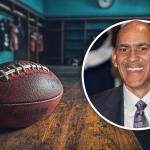
Pop icon Madonna has ignited fresh controversy with her latest social media post featuring AI-generated images of Pope Francis. The provocative pictures, which she shared on Instagram, have sparked backlash among Catholics and social media users alike, raising questions about ethics, respect, and the growing use of AI in digital content.
The 66-year-old singer, no stranger to sparking debates, posted two AI-crafted images of herself and the 87-year-old Pope in suggestive poses. In one photo, Madonna, dressed in a corset and adorned with bold necklaces, stands close to a digitally altered Pope Francis, who appears to have his arm around her waist, leaning in as if to sniff her hair. She captioned the image: “Feels good to be seen…”
A second image, captioned “Going into the weekend like…,” shows Madonna wearing a lacy black top as the AI-created Pope embraces her, pressing his face against hers.
The images quickly went viral, with fans and critics weighing in on platforms like X (formerly Twitter). Some called the post disrespectful and unethical, while others found humor in it. One user wrote, “This is insanely disrespectful and weird, and I’m not even Christian,” while another commented, “Using AI to depict Madonna with the Pope raises questions about ethics and respect in digital art.”
Others took a more lighthearted view. One user tweeted, “She’s so unserious,” while another added, “She’s so messy, I love her.”
Despite the divided opinions, the backlash highlighted broader concerns about the misuse of AI-generated content, particularly when it involves religious figures and sensitive topics.
Madonna’s latest post is just the latest chapter in her decades-long, often contentious relationship with the Catholic Church. Raised in a devout Catholic family, Madonna has frequently used religious imagery in her music, videos, and performances—often to the dismay of Church leaders.
Her 1986 hit “Papa Don’t Preach” stirred controversy for its perceived pro-life message, drawing criticism from Planned Parenthood and conservative groups alike. In 1987, she dedicated the song to Pope John Paul II during a concert, prompting the Vatican to denounce her and call for a boycott of her performances in Italy.
The friction continued with her 1990 Blond Ambition tour, which the Vatican condemned for its explicit themes. In 1992, her provocative coffee-table book Sex and its use of religious symbols further alienated her from the Church. Even her 2012 MDNA Tour drew Catholic criticism for its bold incorporation of religious motifs.
Yet, despite these controversies, Madonna has often returned to her Catholic roots, blending religious themes into her art and speaking openly about her spiritual journey. In a 2015 interview, she told the Irish Independent, “I don’t affiliate myself with any specific religious group. I connect to different ritualistic aspects of different belief systems, and I see the connecting thread between all religious beliefs.”
The AI-generated images have reignited debates about the intersection of faith, art, and respect. While Madonna has long used her platform to challenge norms and spark dialogue, critics argue that this latest stunt crosses a line, trivializing both religion and the Pope’s role as a spiritual leader to millions.


